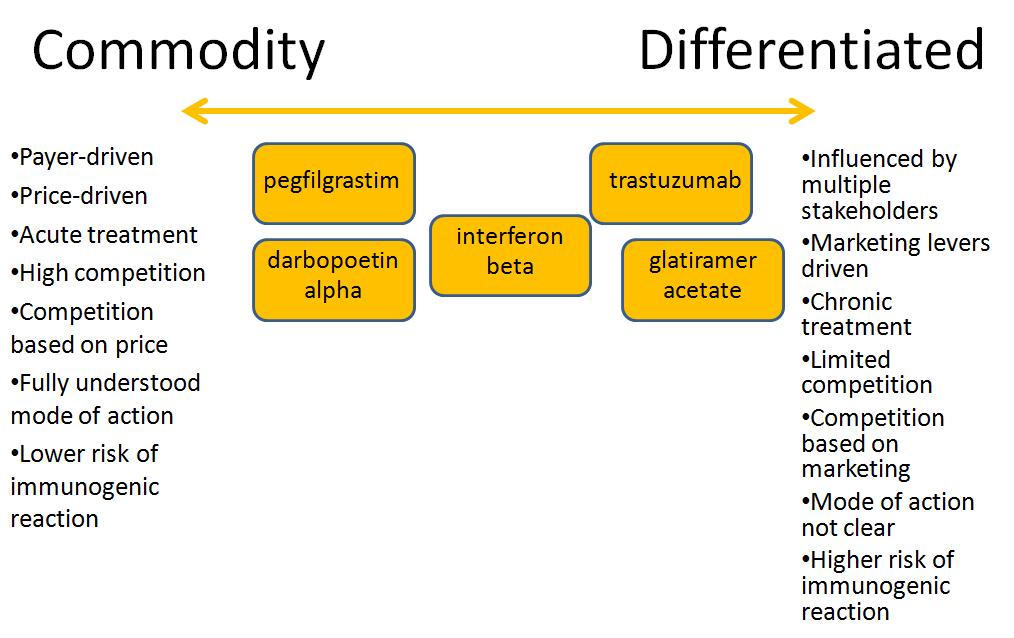Positioning of biosimilars: commodity versus differentiated
Published: 2012/10/25
How to market a new biosimilar is a key question, especially when taking into consideration the costs that are associated with developing a biosimilar. Whether the biosimilar will be a bulk (commodity) product or a differentiated product can have significant impact on the uptake of the biosimilar.
Uptake of biosimilars varies between different countries when therapy areas are considered according to drug class. For example, the market for somatropin is differentiated due to a complex stakeholder landscape influenced by physicians, the competition is based on multiple marketing levers. This results in uptake of biosimilar somatropin being significantly lower than in commodity markets where access is mostly controlled by payers, e.g. tender, step-wise algorithms; and price competition, e.g. G-CSF, epoietins. Differentiated biosimilars are most likely when they are indicated for chronic treatment and/or long therapeutic cycles, where patients prefer to stick to a ‘known’ product. On the other hand, commodity biosimilars are most likely those indicated for acute treatment and/or frequent cycling among therapies.
Just looking at five of the biosimilars that have entered the regional markets or due to enter the global market in the coming years, you can find both commodity and differentiated products amongst them, see Figure 1.
Figure 1: Positioning of current and future biosimilars

Uptake patterns will most likely vary across geographic clusters, and, for example, biosimilar insulins may perform better in emerging countries, such as Brazil, China,
India and Mexico. These countries have already developed their own regulatory pathways to manage the approval of biosimilars, with in general lower barriers in terms of clinical trial requirements and regulatory control than in Europe.
Editor’s comment
If you would like to receive figure 1* with added information on 12 forthcoming biosimilars, please send us an email.
*For profit organisations subjected to a fee
Related articles
European uptake of biosimilars
Biosimilars: key players and global market trends
Source: www.gabionline.net


